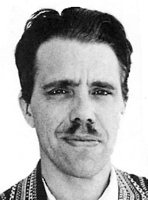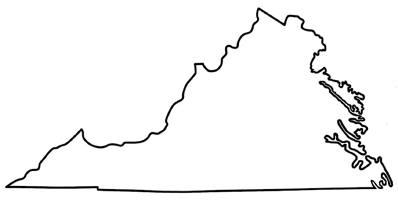
|
The Society of Folk Dance Historians (SFDH)
Dance in Colonial Virginia
[
Home |
About |
Encyclopedia | CLICK AN IMAGE TO ENLARGE |

|
"Yes, but can she dance?"
 This could very well be a query voiced by George Washington or William Byrd II, both ardent dancers – or almost any one of the planters, the upper merchants, or government leaders who comprised the social elite of colonial Virginia in the century preceding the American Revolution.
This could very well be a query voiced by George Washington or William Byrd II, both ardent dancers – or almost any one of the planters, the upper merchants, or government leaders who comprised the social elite of colonial Virginia in the century preceding the American Revolution.
A study of the archives of Virginian history – state papers; the Virginia Gazette; the William & Mary Quarterly; dairies of prominent men of the period such as Robert Carter, Philip Fitchian, George Washington, and especially the prolific and sometimes rather juicy memoirs of William Byrd II –, indicate that dance was a very important part of the life of the people of the times – not only the well-to-do, but through the entire gamut of the social stata of the colony, even to the slaves. In fact, many of the slave-owners quite enjoyed watching at these Saturday night diversions on occasion. However, it was probably the 300 families of the upper ruling class, the FFVs (First Families of Virginia) who were in the main, responsible for the respect in status given to dance. They were the ones who who imported the dancing masters, or at least, encouraged them to come to Virginia from England and France to teach to their children the genteel art of the dance, or to show them themselves, the latest dances that were being danced in the ballrooms of London and Paris. That dancing that was considered worthy of official note may be seen in the announcement by Governor William Gooch in a letter to his brother back in England that ". . . the gentlemen and ladies here are perfectly well-balanced bred – not an ill dancer in my government . . ."
Mistresses of the homes in Virginia of the century were not always beautiful, nor were they necessarily accomplished in the arts and literature. Higher education was not deemed a requisite for women of colonial days, either in the colonies or the mother country, England, and those few, like Evelyn Byrd, who were sent to England for schooling, were rareties. It was many years after the Revolution before higher education was opened to women in Richmond. However, there was no problem involved. What was needed was grace of movement, ability to mix and entertain socially, and a love of dance. Most Virginian women had all of these requirements.
 The colonial gentleman of Virginia was usually fairly well-educated, quite often having been sent back to England or France by his family for schooling. It is noted in several places that "music, dancing, and fencing" were listed high on the curriculum. While abroad, they entered the social whirl of the English upper-crust where dancing was an important part of an evening of jollity, and the young "blades" soon discovered that the young English ladies much appreciated the companionship of a well-mannered gentleman who could dance well, which often led to a much more interesting part of the night later on. What they learned was enthusiastically brought back home to Virginia.
The colonial gentleman of Virginia was usually fairly well-educated, quite often having been sent back to England or France by his family for schooling. It is noted in several places that "music, dancing, and fencing" were listed high on the curriculum. While abroad, they entered the social whirl of the English upper-crust where dancing was an important part of an evening of jollity, and the young "blades" soon discovered that the young English ladies much appreciated the companionship of a well-mannered gentleman who could dance well, which often led to a much more interesting part of the night later on. What they learned was enthusiastically brought back home to Virginia.
Freed from the straits of Puritanism, the early settlers found pleasure in the inclusion of mirth and festivities at religious festivals, such as Christmas and Twelfth Night. Great balls became an important part of the holiday entertainment fare on the plantations and in the towns. By the mid-1700s, many of the plantation houses had large and elegant ballrooms. The leaders were no longer colonists per se or government officials sent over from London, but those of the first generation who had "made it" and could afford the good life. Traveller Philip Fithian, in his journals, tells with wonderment of the activities during the Christmas holidays on the estates in Westmoreland, Fairfax, and Prince Williams counties where the balls, the fox hunts, laden dining tables, wine cellars, and other entertainments were the entire topic of conversation for the whole festive fortnight.
Weddings were always an occasion for putting on a big house-party and dance. There are many records extant of these Virginia weddings, mostly in the writings of travellers and historians from abroad who were greatly impressed by it all. Probably some had come over expecting to see a people grubbing away at a poverty level and found instead a rich land of well-to-do people. A wedding at the home of William Beverly is written of in detail by an English visitor, Robert Hunter, wherein he describes the marriage ceremony, then the big dinner, the wedding breakfast, and then goes on to say that ". . . after dinner we danced cotillions, minuets, Virginia and Scottish reels, country dances, jigs, etc. until ten o'clock when the groom and bride skipped away . . ." He continued on to say that for three days after, the company enjoyed sumptuous meals and almost continuous dancing.
Those folk not as well to do made as much of their wedding celebrations as did the landed gentry, that is, within the limits of their purses. They would start with a morning meal, then after the last minute preparations, the wedding ceremony would take place at noon (these Virginia weddings seem to have generally taken place around mid-day). Following the ceremony, there was a good meal which perhaps included beef, venison, bear, pork, and poultry, with simple vegetables, much sweet stuff such as puddings, pies and cakes, and "bottled goods." There were the usual "peasant" customs of joshing the groom, hiding the bride's slipper, etc. and then came the dancing. At these weddings one could usually find more of what we nowadays consider the folk dances, the country dances, quadrilles, and the jigs. Dancing usually lasted until dawn, and if one of the dancers attempted to sneak away to hid out and catch forty winks, he (or she) was promptly rounded up back onto the dance floor and made to do a special dance called Hang It Out Till Morning. Quite often, the music for the jigs at these functions was played by black musicians.
One of the very important persons in Virginia, and the other colonies too, especially in New Hampshire and Massachusetts Bay, was the dancing master. In some towns, he was a resident with a studio, in others, he travelled around a regular circuit. In some cases he did both. On tour, he would teach his pupils, privately or in groups, with maybe as many as a dozen students who would foregather from surrounding plantations to meet a centrally located dancing master to come and give private lessions to a family. An example of this would be Robert Carter of Corotoman, certainly one of Virginia's wealthiest men. He called on Williamsburg's noted dance instructor, Charles Stagg, to visit the plantation for one full day each month. After the instruction was over for the day, a general evening of open dancing was called. The visit and tutoring by the dancing master was the occasion for a social event attended by the younger set. The young Lees, Carters, Corbins, Harrisons, and so forth, met at least twice a month rotating in their homes in Westmoreland, King George, Richmond, and Northampton counties in the upper Northern Neck in these gatherings. Others did the same down on the Peninsula between the James and New York Rivers with the Byrds and friends, while still another circuit met up along the Potomac in the plantations such as Mount Vernon, Gunston Hall, and Alexandria. As one reads the list of names of these participants, it seems that it might be that these dances helped to keep these families close together within their class which has lasted well into the present century. There was much intermarriage, and the fact is true about so many of the people being "cousins." Even in comparatively recent times over one-third of the families were related in some manner.
As a teaching guide, an English version of the French dance master, Feuillet, was often used. It included notations and diagramming, a sort of "research and standardization" system, which not only showed the footwork in diagram along with the explanatory directions, but also matching written bars of music, a visual "sound track" as it were. In fact, the lengthy title of the manual claims that by following the instructions and pictures, anyone could teach himself (or herself) how to dance all of the latest dances! Playford's Dancing Master in its 1728 edition contained over 900 dances. Many of these we know of as the contra dances or "longways" dances which became, and still are, popular in New England. In the southern colonies, and again, especially Virginia and Maryland, the minuets and the more elegant and languorous dances from France were the favorites, although many of the country dances were popular too. In fact, one of the most widely known contra dances, the Roger de Coverley became known in later days as the Virginia Reel. When these set dances were danced at a wedding, the bride and groom were always accorded places at the head of the set.
There also were dances for the public. There were the assemblies in the towns, such as in Williamsburg, where they were held in taverns or in public buildings such as the Capitol building itself. These were usually advertised in the paper or broadsides, with an admission charge, possibly two to four shillings, but refreshments were usually served. They also were held in the studios of the dancing masters. Then there were the "subscription balls," held in the halls of the House of Burgesses (the legislature). In the homes where the private balls were held, refreshments also were served, usually of a more potent kind. If one had adequate finances and could dance and liked to eat, life was not at all bad in Colonial Virginia. All did not stop with 1776; though perhaps a little abated as befitting a Republic, continued until the eve of the War Between the States. It still goes on, too, and the last edition of the Peoples Folk Dance Directory indicated many of the Virginian folk dance clubs perform the Colonial dances almost exclusively. Sic Semper Tyrannis!
BIBLIOGRAPHY
- Byrd, William II – Diaries – miscellaneous – Dietz Press, Richmond, 1941-1942.
- Carson, Jane – Colonial Virginians at Play – University of Virginia Press, Charlottesville, 1965.
- Dowdey, Clifford – The Virginia Dynasties – Little Brown & Co., New York, 1969.
- Fithian, Philip V. – Journal and Letters 1767-1774 – Colonial Williamsburg Inc., Williamsburg, 1943.
- Williams & Mary Quarterly – Williamsburg, miscellaneous.
DOCUMENTS
- America, a country.
- Appalachian Dance and Music, and article.
- Dance and Music in Dixie – 1860-1865, an article.
Printed in Folk Dance Scene, July/August 1982.
This page © 2018 by Ron Houston.
Please do not copy any part of this page without including this copyright notice.
Please do not copy small portions out of context.
Please do not copy large portions without permission from Ron Houston.